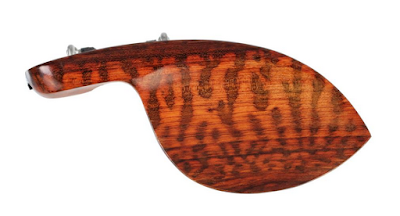Hunting For The Perfect Cello Endpin
The cello endpin has had a very short but chequered history. Cellists from the Baroque and Classical periods were bestowed with long and well-toned legs and could balance the instrument on their calves. The more short-statured players would at times use a neck strap, or maybe even a stool. But the endpin was a rarity and few professionals would dare to use one.
Sometime in the late 19th century, an anonymous bright spark came up with the idea to put a wooden stick at the end of the instrument. And thus the cello endpin was born. But he wasn’t as bright though. Else, he would have run to the nearest patent office.
The endpin idea struck like a wildfire. Soon, every cellist was using one to support the instrument. This improved the sound as warm and sweaty calves had an impact on the projection of the cello. The freedom of movement also improved dramatically and the instrument, now balanced on the endpin, could be swayed as and when required to forge a different sound. The endpin meant that women could now play the instrument, which earlier wasn’t possible.
The cello endpin, these days, come in a seemingly exhaustive range of designs and materials. The spikes are manufactured from boxwood, ebony, rosewood as well as hollowed steel and carbon fiber. Players, of course, have their own choice of endpins. The fittings are often fashioned out of nickel and other materials. Even gold and silver are also used. Tungsten tips or carbon rods are commonly used to finish off the endpin.
Sometime in the late 19th century, an anonymous bright spark came up with the idea to put a wooden stick at the end of the instrument. And thus the cello endpin was born. But he wasn’t as bright though. Else, he would have run to the nearest patent office.
The endpin idea struck like a wildfire. Soon, every cellist was using one to support the instrument. This improved the sound as warm and sweaty calves had an impact on the projection of the cello. The freedom of movement also improved dramatically and the instrument, now balanced on the endpin, could be swayed as and when required to forge a different sound. The endpin meant that women could now play the instrument, which earlier wasn’t possible.
The cello endpin, these days, come in a seemingly exhaustive range of designs and materials. The spikes are manufactured from boxwood, ebony, rosewood as well as hollowed steel and carbon fiber. Players, of course, have their own choice of endpins. The fittings are often fashioned out of nickel and other materials. Even gold and silver are also used. Tungsten tips or carbon rods are commonly used to finish off the endpin.



Comments
Post a Comment